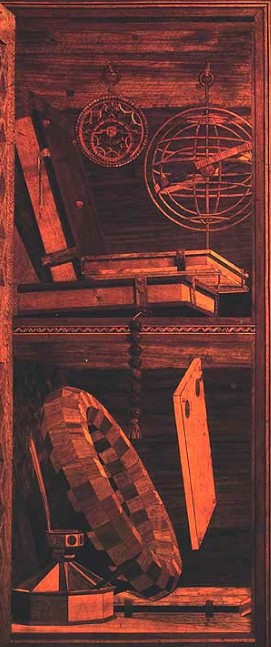Editorial
 The
Sorry State of Academic Journal Writing on Medieval and Renaissance Combat
Arts The
Sorry State of Academic Journal Writing on Medieval and Renaissance Combat
Arts
Think back to the best and most memorable historical reading you've
ever enjoyed or found vital. Was any of it of the pompous, overwrought,
jargon-cluttered variety?
By
John Clements
ARMA Director
I try to stay current on academic journal papers about the fight books
and I am happy to see so much serious scholarly effort being done on them
at the graduate level. It's been decades in the making. But, the mind-numbing
insistence on ridiculously masking everything in vacuous over-intellectualized
"academic jargon" renders it akin to torture. If a conscious
effort were made to render their research comically unreadable, they could
do little better. Anything worthwhile analyzing the subject material is
buried under ponderously overwrought verbiage.
 The slavish conformity to the bane known as modern academic writing style
doesn't make it at all useful and it doesn't make any of it interesting.
It doesn't make anyone want to pay attention and it doesn't make anything
they say come across with any conviction that they actually have anything
important to share. It does exactly the opposite. Yet they seem to be
clueless to this and obediently drone along, religiously conforming to
the doctrine that to be taken seriously as a "scholar" they
must deliberately say as little as possible in as many words as possible. The slavish conformity to the bane known as modern academic writing style
doesn't make it at all useful and it doesn't make any of it interesting.
It doesn't make anyone want to pay attention and it doesn't make anything
they say come across with any conviction that they actually have anything
important to share. It does exactly the opposite. Yet they seem to be
clueless to this and obediently drone along, religiously conforming to
the doctrine that to be taken seriously as a "scholar" they
must deliberately say as little as possible in as many words as possible.
Though mercifully there are many wonderful exceptions, the modern academic
journal writing style makes virtually all of their product unreadable
and excruciatingly dull. It's as if to be able to convince their professors
that they have real insight into a real topic, they are forced to take
something as exciting and personal as historical self-defense teachings
and intentionally mutate it through some sort of fringe postmodern literary
criticism. Its pseudo-intellectualized self-referencing blather is a nauseating
failure on so many levels. It does nothing to give their papers credibility.
What advantage is there in rewarding scholars for constructing
technical literature so as to render it all but useless in terms of
reading for either enjoyment or education? More educated persons than
myself have complained how this a problem
across all academia, so no reason to expect it to be any
different for
scholarly papers on our subject. But, since I don't focus on
other subjects,
as an outsider when I see it in my beloved field I'm disgusted.
Think
back to the best educational history reading you've ever
enjoyed. Was
any of it of the overwrought, pompous, and jargon-cluttered
kind? I bet
not.
It's one thing to have a technical vocabulary or terminology specific
to a field of study, and another entirely to intentionally bloat writing
beyond anything necessary for examination or critical analysis. Dr. Sydney
Anglo, and before him, Ewart Oakeshott and David Edge, each showed how
we can write about historical combat arts or arms and armor in plain language
while still being scholarly, erudite, informative, and eminently useful.
But the orthodox adherence to verbose and pompous wordage is just a
game
that does nothing to revitalize our efforts at reconstruction of
our craft.
It's not surprising then that almost none of it offers pertinent
insight
into how combatants of the past moved and fought, nor helps us
better
revive and practice their methods today. Rather than communicate
clearly
and directly, they go out of the way to read as if they are part
of an
exclusive "elite" community of "insiders" not accessible
to the "uninitiated," but instead they just come across as
obnoxiously
pretentious. After painfully drudging through the typical "HEMA"
paper, one usually ends up asking where in all these pages-and
obligatory
citations of other identically inflated papers-did a single
previously
unknown fact get presented or an interesting original opinion
conveyed?
Was there a single substantive experience described? It's all
done up
with deliberate obfuscation; a humorless game of language
camouflage to
make it read as something knowledgeable while concealing that
there is
really nothing there. One can read an entire sentence and not
find an
intriguing string of verbs and nouns, or digest whole paragraphs
and come
away realizing they said absolutely nothing. One has to wonder:
What target audience relishes the indigestion from reading such
self-important noise?
Just use enough wordage in your to insure it comes off as above
the layman’s understanding and —poof!— professors can then get away with
not really having had to read through and comprehend it. That’s the
con. Academia should be both mocked and scorned for coddling this
muddling drivel that comes at the real expense of subverting true
intellectual rigor. Does doing this aid or hinder the process of peer
review in evaluating scholarly methods and conclusions?
The false formality of the obtuse is a pretense that no one in the real
world uses. Plain language that is clear and concise is critical in any
field where you actually have to do real work and accomplish things.
This is just as true when trying to make the case for a historical
argument. It’s even more necessary when teaching self-defense skills.
How much more so when the two are combined? If the strength of your
findings or the value of your opinion is such that it cannot be
communicated directly in ordinary language, then disguising like an
over-decorated wedding cake is a dead give away you have nothing worth
sharing. What a wasteland of effort.
Research papers shouldn’t be a deliberate word-salad of unreadable
obfuscations. It’s supposed to contribute to the net store of human
knowledge and in the process provide something useful —even more so in terms of studying pragmatic martial disciplines. Too much of the academic research into our subject makes the mistake of
assuming violent self-defence is all reducible to analysis by
sociological factors. But no matter how structured or deliberate
personal combat is, fighting it is still a violent irrational activity
not entirely definable by physical science and material objects alone
but by passions and will (or if one prefers, the spiritual). The
cultural and psychological elements involving intangibles of human
performance are un-quantifiable. They cannot be modeled. Indeed, it is
this very thing that makes fighting science an Art.
*In the time since I first wrote this piece it seems that
the problem has only gotten worse. Papers on our subject continue to
deliberately couch simple sentences in overwrought paragraphs that are
all but indigestible. When we look back at the educational works on
Medieval and Renaissance fighting arts or arms & armor that are the
most interesting, the most quotable, and the most enjoyable to read
—such as those by Castle, Hutton, Alyward, and Anglo— none of them wrote
in the inflated jargon of modern academic speak. None of them struggled
to embellish their opinions in elaborately structured language and
unnecessarily verbose terminology that obfuscates rather clarifies. They
lectured, but they did so in a way that made you eagerly pay attention
rather than yearn to fall asleep.
5-2020
|

